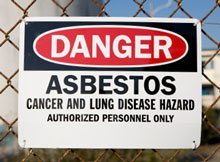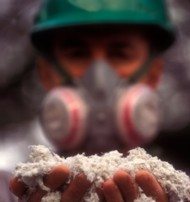Mesothelioma Risk in Older School Buildings
A new government report has some sobering news for teachers and students in England: Nearly 20 percent of schools may be failing to adequately protect them from asbestos, the primary cause of malignant pleural mesothelioma.
The asbestos management report, issued by the Education Funding Agency, is based on data collected online from more than 5,500 schools in 2016.
It offers a disturbing view of mesothelioma risk among England’s teachers and students due to poor management of the deadly toxin.
Asbestos in English Schools
Before asbestos was linked to illnesses like malignant mesothelioma, lung cancer, and asbestosis in the 1960s it was prized as a cheap, plentiful, and effective insulation and building material.
During the rebuilding in England after World War II, public buildings, houses, and many schools were built using asbestos-containing building products and insulation. Although some of those buildings have been replaced, many others are still standing. According to the EFA report, 4,646 of the schools that participated in the survey said that asbestos was present in their building.
As asbestos deteriorates, it must be carefully managed to reduce the risk of mesothelioma that comes from inhaling the dust. Safety regulations designed to minimize mesothelioma risk among teachers and students include inspecting and sealing up areas where deteriorating asbestos is present so it cannot become airborne.
But, according to the report, “Around 20 percent [of schools] were not fully compliant in that they did not have fully documented plans, processes, and procedures in place at the time of the data collection or did not know if asbestos was present.”
Managing Asbestos for Reduced Mesothelioma Risk
Unfortunately, the UK is not alone in its school asbestos problem. Most US school buildings built before 1981 contain mesothelioma-causing asbestos, according to NIOSH.
In the early 1980s, in the wake of an assessment of 2,600 public schools, the US Environmental Protection Agency (EPA) determined that asbestos in school buildings “poses a significant hazard to public health.”
Under the Asbestos Hazard Emergency Response Act that followed in 1986, US public school districts are required to carry out regular asbestos inspections, have an asbestos management plan in place, and train custodial staff in asbestos awareness.
But according to Asbestos Nation, a website run by the lobbying group EWG Action Fund, little is being done to ensure that schools comply. In the meantime, thousands of students and teachers could be at higher risk for contracting deadly malignant mesothelioma.
Malignant Mesothelioma and Asbestos Dust
Staff and students in older schools can help reduce their own risk for mesothelioma by taking some simple precautions.
The English report recommends that teachers avoid using pushpins in walls where asbestos might be present to avoid releasing dust. In addition, exposed insulation should never been touched and should be promptly reported to school administrators.
Study respondents whose asbestos management plans fell short of recommendations were advised on how to bring their schools into compliance to minimize the incidence of mesothelioma and other asbestos-related illnesses.
Sources:
“Asbestos Management in School: Data Collection Report”, Education Funding Agency report, February 2017
Asbestos and School Buildings, EPA website, Accessed March 2, 2017
Walker, Bill, “Asbestos Remains Widespread Hazard in US Schools”, EWG Action Fund/Asbestos Nation






